Limitation of Retardation Measurement by Berek Compensator
Berek compensator is a variable phase plate
used with a polarized light microscope to measure the retardation of a sample. It
has a plate of a uniaxial birefringent crystal such as calcite or magnesium fluoride. The optical axis of the crystal is
perpendicular to the surface. By rotating the plate, retardation continuously
increases. The retardation is a function of the rotation angle.
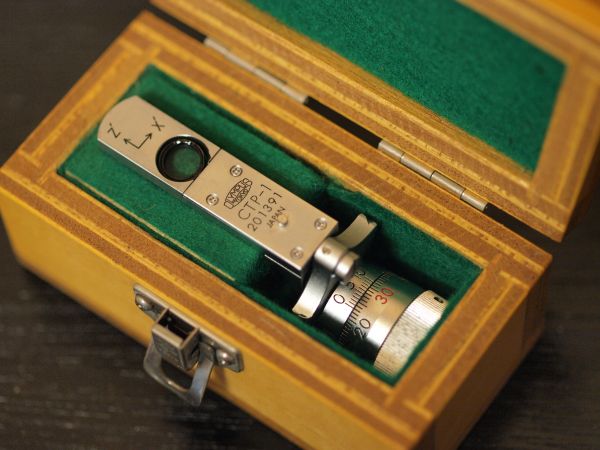
Fig. 1 Berek Compensator
|
Relationship between Retardation and
Rotation Angle
|
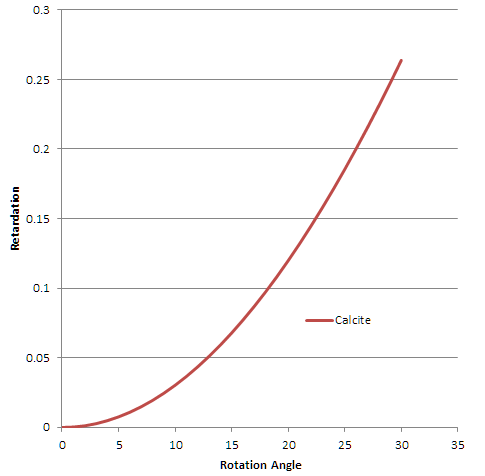
Fig. 2 Relationship between Retardation and Rotation Angle
Figure 2 shows the relationship between the angle and the retardation. We have found three equations to express the relationship. One is the equation in the Olympus website.
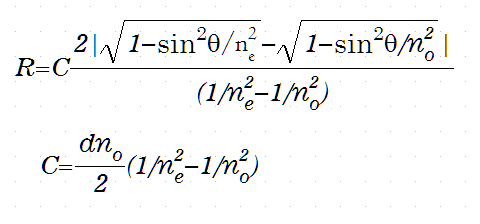
The second one is the approximation formula for tilted uniaxial crystal in the textbook of polarized light microscope written by Tsuboi.

The third one is an empirical formula
obtained by fitting correction table data of a Berek compensator.

These three equations give the same result practically. You can use any of
these equations.
Each compensator has a correction table for
it. Since the thickness of the plate differs
among compensators, the correction table is only valid for the compensator. When you buy a new compensator, you get the table with
it. You should keep the table carefully. It is a good idea to make a
spreadsheet file to calculate retardation from the measured angles. Using the third
formula above, you can easily make such a file. If you do not have a correction
table for your compensator, you can make it by yourself. Prepare phase plates
having known retardation values. Measure the rotation angle of the compensator
for each phase plate. Using the relationship between retardation values and
angles, you can decide the fitting parameters of the third equation.
| Effect of Dispersion on Measurement |
Since refractive indices
have dispersion, birefringence also has dispersion. The dispersions of the
sample and the compensator are different unless they are made of the same
material. The difference makes compensation imperfect. This imperfection does
not cause a serious problem in the measurement when the difference is not
large. Figure 3 shows the simulation results of compensation a quartz plate with
retardation of 2000nm by a compensator made of calcite.

Fig. 3 Compensation Simulation of Quartz plate with retardation of 2000
nm by calcite
As shown in the
figure, polarization color becomes darkest at 2000nm of the compensator. The
brightness also becomes the darkest at this value. For such materials,
birefringence measurement by a Berek compensator gives good results.
In contrast, measurements
give false values when the birefringence dispersion is large so as to show anomalous
polarization color. Figure 4 shows the compensation
simulation of 5CB by a calcite compensator. The reference wavelength of the retardation
is 593 nm, the sodium D-line. When the retardation is 250 nm, the darkest
position is the same as the retardation of the sample. The retardation of the sample
increases, not only the same value but also one order higher value becomes
dark. By plotting Y value of XYZ chromaticity diagram, the darkest value can be
evaluated numerically. The darkest value is the same as the sample till the
retardation value of 750 nm. The one order higher value becomes darkest for
retardation from 1000 nm and higher.
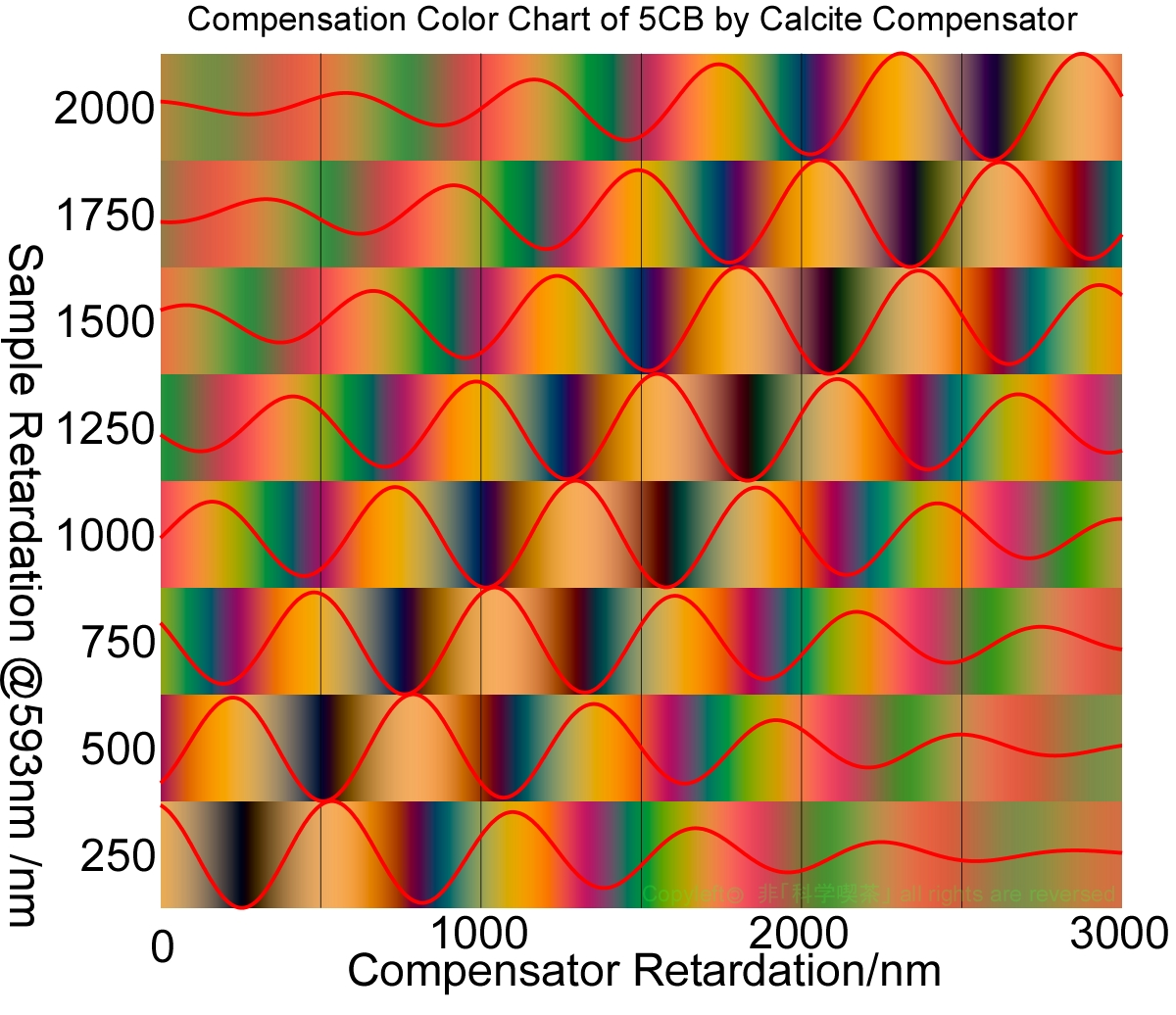
Fig. 4 Compensation of 5CB by Calcite
Sometimes a
monochromatic filter is used with the compensator to make an estimation of the
dark position easier. Fig. 5 is the simulation of compensation with the Nikon
GF green filter. Though the wavelength range is smaller than without the
filter, the brightness of the false value becomes the darkest in higher sample
retardation values. Usage of a bandpass filter doesn't help the decision of the
true compensation value.
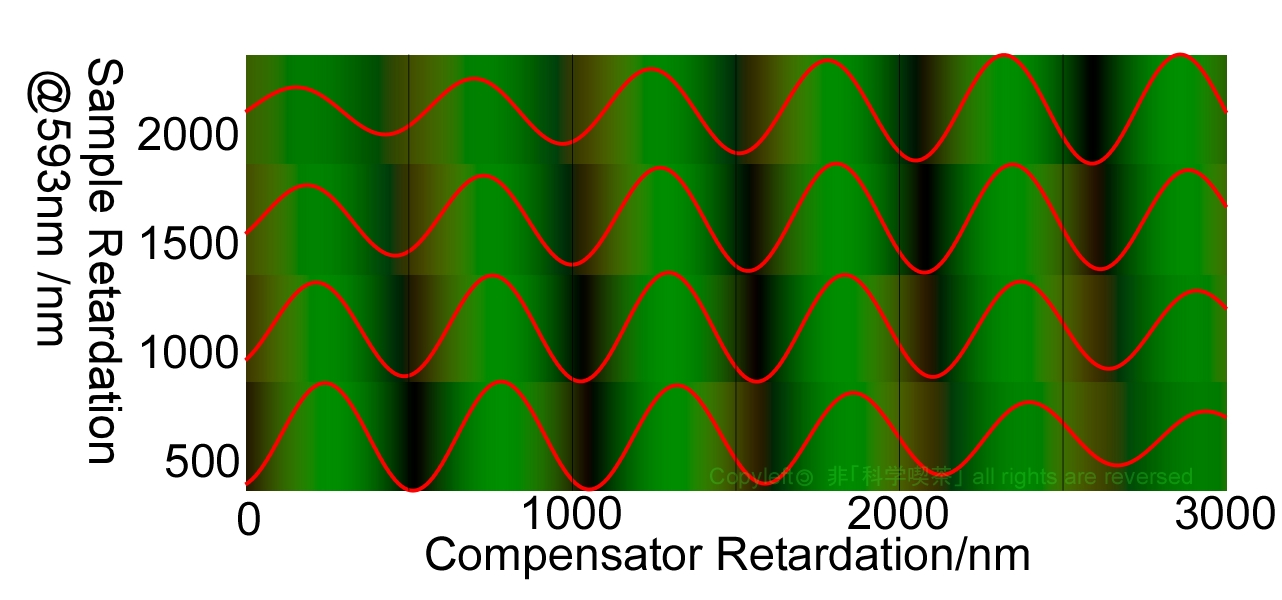
Fig. 5 Compensation of 5CB with green filter
Figure 6 shows the compensation simulation of MBBA by the compensator. Birefringence dispersion of MBBA is bigger than that of 5CB. Therefore, the darkest value changes to the first higher minimum values at 750 nm. And the second higher minimum becomes darkest at the sample retardation of 3000 nm.
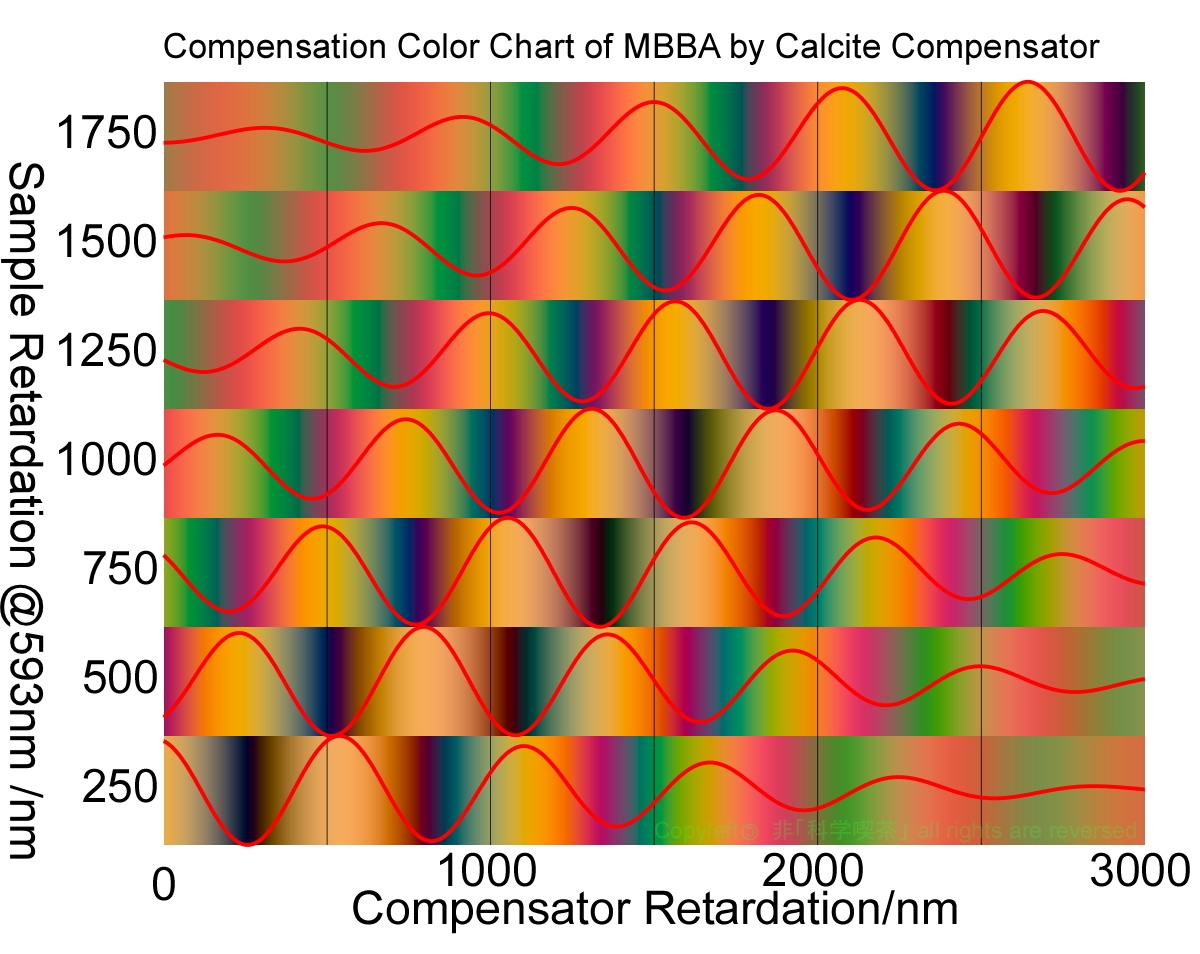
Fig 6. Compensation of MBBA by Calcite
|